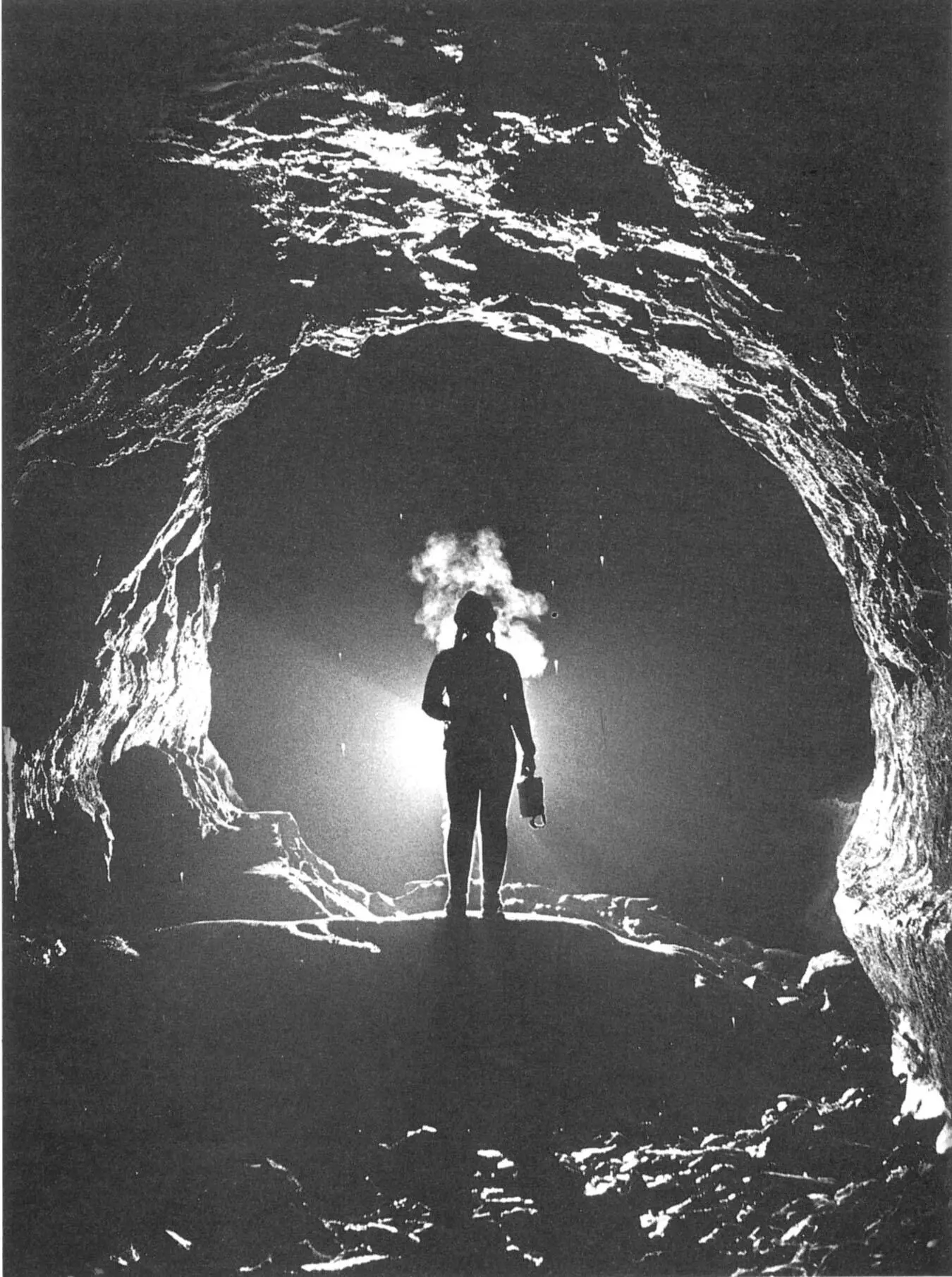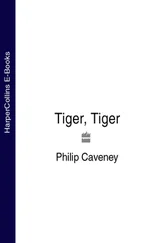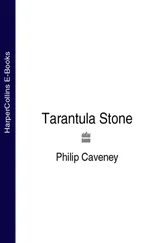Driving curiosity and a sense of wonder are perhaps the two features which above all unite the caver and the naturalist. I hope that this book can make the passion of the one intelligible to the other, and so enhance the experience of both.
2
The Cave Habitat
What is a cave?
Put this question to any wetsuit-clad, hard-hatted individual found walking across the Mendip Hills, Yorkshire Dales or the shining limestone pavements of the Burren, and you will discover that a cave is a naturally-formed hole in limestone which is large enough to be explored by a caver.
Ask the same caver what he or she has noticed in the way of living creatures in caves, and the answer may well be “not a lot.” It will perhaps surprise most cavers (and naturalists) to learn that over a hundred species of invertebrate animal have been recorded as maintaining permanent populations in cave habitats in Britain and Ireland, plus another score or so species of creatures such as bats and moths which use caves as a regular part-time shelter. The cryptic community to which these creatures belong remains largely undetected by cavers because it generally avoids the relatively large tunnels and booming chambers, the glistening calcite draperies and crashing waterfalls which so captivate the human cave enthusiast, preferring instead the cosy confines of smaller cracks and crevices. I hope in this book to shed light on at least a portion of this unsuspected world which lies beneath our feet, whether we live in Grassington or Glasgow, Lisdoonvarna or London, and to offer pointers to fellow amateur naturalists towards fruitful areas of investigation for the future.
To unravel the natural history of a cave, or indeed any habitat, we must try to perceive it as far as possible from the point of view of its inhabitants. It requires a considerable effort of imagination for such sight-dependent creatures as ourselves to grasp the essence of life in the dark and labyrinthine realm of the cavernicole. A little inspired speculation may be needed to find the ‘right’ questions to lead us to fresh insights into the mysterious world beneath us.
We might start by imagining what kinds of habitats could be accessible to the cavernicole and then consider which environmental characteristics of such places are likely to influence its choice of where to live. Almost at once we run into problems, for although a good deal is known about the environment in man-sized, air-filled limestone caves in Britain and Ireland, we know much less about the conditions within smaller cracks and crevices or in caves beneath the water-table, and less still about our submarine caves. Fortunately, such information is more readily available from other parts of the world. So in this chapter we will take an international approach to defining and classifying the cave environment, before turning in later chapters to a detailed consideration of what is known about our own cave fauna.
What then is a ‘cave’ as perceived by its inhabitants? The dictionary definition of “a natural underground chamber” gives us a less than helpful starting point, for why should we suppose that the cavernicole will distinguish between natural or man-made tunnels, or between subterranean and above-ground enclosed chambers, as long as the appropriate conditions of food supply and microclimate are present in the living space? Should we then include mines, adits, buried pipes, culverts, sewers, cellars, tombs, the London Underground System, or perhaps even houses and other enclosed buildings in our preliminary list of potential cave-habitats? To what extent should our definition specify the material bounding the cavity? Must a cave be rock-lined, or should we widen our brief to include animal burrows and other spaces present in soil, for surely it must be arbitrary to distinguish between an earthy burrow and a muddy hole of similar dimensions in rock?

Fig. 2.1 The main tunnel of Sleets Gill Cave in Wharfedale, Yorkshire Pennines – a classic phreatic tube, formed and enlarged by water filling the passage and so dissolving the limestone rock equally on all sides. (Chris Howes)
As it happens, soil faunas are very well documented, and while it seems that many animal groups are common to both soils and caves (and indeed to leaf-litter and the deep moss-carpets of tropical regions as well), the fauna of organically-rich topsoils is sufficiently distinct from that of most rock-space habitats to warrant a separate treatment. I shall therefore exclude soils forthwith from our definition of cave habitats (but see ‘Cave sediments’ under ‘ Types of cave habitat’ later in this chapter). Similarly, the voids in other organic, living or once-living materials, such as wood or the guts or blood vessels of animals, have distinctive specialized faunas of their own, clearly distinguishable from those of habitats within inorganic materials – although some specialized xylophages, such as termites, and endoparasites, such as tapeworms or flukes, share certain morphological specializations (eyelessness, depigmentation) characteristic of the more specialized cavernicoles. When it comes to holes of human fabrication, most significant biological criteria must lead us to include them in our category of caves. That they have a very poor fauna in comparison with natural caves, is due less to their artificial nature than to their frequent isolation from sources of natural colonization and their often unfavourable microclimate.
Having narrowed our definition of the cave environment to ‘habitable voids bounded by walls of rock, or similar inorganic materials’, let us now consider the physical criteria which may determine their habitability: the presence or absence of light, physical space (the size of the hole), the medium filling the space (water or gas mix), the microclimate within the medium (the pattern of change in temperature, pH, etc. over time), and the nature and amount of available food.
Let us begin with the business of light, a variable of obvious biological significance. Beyond the limits of light penetration, the cavernicole will be obliged to rely on senses other than sight, and on foods other than green plants. Perpetual darkness is a characteristic of most rock void habitats anyway, so let us choose to define ‘the cave’ as a habitat entirely without natural illumination. This will substantially simplify our task, by excluding from the cave fauna a whole host of organisms which seek shelter in cave entrances, but also live in a wide range of other shady, sheltered habitats such as the woodland floor, or river gorges, or houses and other structures used by people. Later we will consider the illuminated portions of man-sized caves as a significant ‘cave-related habitat’ – the ‘cave threshold’ – simply because it is familiar and accessible to cavers, while ignoring all other lit, cave-related habitats.
In the world of dark holes, the physical dimensions of a potential habitat are of obvious importance in determining what creatures can colonize it. One has only to consider the relative body-diameters of a man (say 450 mm across the shoulders), a Greater Horseshoe Bat (60 mm), a cave spider such as Meta menardi (6 mm), a springtail (0.6 mm) or a nematode worm (0.06 mm) to appreciate that one creature’s spacious accommodation may be another’s unenterable squeeze, and that the cave biologist may be excluded physically from all but a tiny proportion of the very largest of cave habitats. Frank Howarth, an entomologist who works mainly on the fauna of Hawaiian lava caves, distinguishes three principal hole-size categories which appear to have biological significance for subterranean biotas. He terms these ‘macrocavernous’ (>200 mm diameter), ‘mesocavernous’ (1–200 mm diameter) and ‘microcavernous’ (<1mm diameter).
Читать дальше













